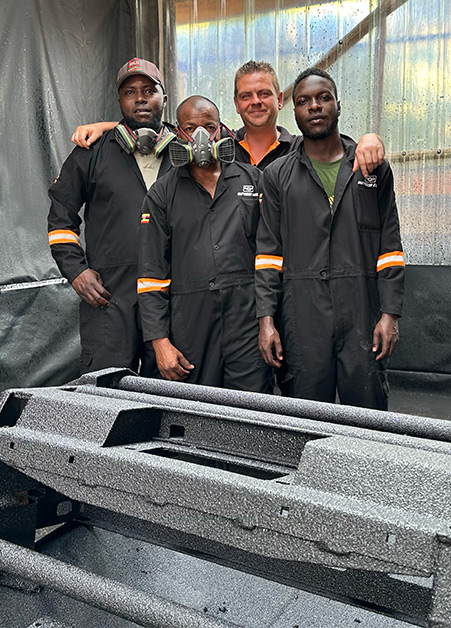Why should I choose Rhino Linings instead of traditional bitumen/asphalt waterproofing?
Rhino Linings is seamless, highly flexible, and bonds directly to the substrate. Unlike bitumen, it doesn’t crack, peel, or degrade under UV exposure. It also has superior chemical resistance and durability, reducing long-term maintenance costs.
Is Rhino Linings more expensive than alternatives?
The initial cost may be higher than bitumen or asphalt, but Rhino Linings lasts significantly
longer, requires less maintenance, and eliminates costly repairs. Over the lifespan of the project, it is
more cost-effective.
How long does it last?
Properly applied Rhino Linings can last 10–20 years or more, depending on the environment.
It withstands harsh UV, chemicals, abrasion, and extreme weather where traditional coatings typically
fail sooner.
Can it be applied to any surface?
Yes, Rhino Linings adheres to a wide variety of surfaces, including metal, concrete, wood,
fiberglass, and more. With proper surface preparation, it creates a permanent bond.
How quickly can it be applied and returned to service?
Rhino Linings is a rapid-curing, hot-spray application. It can often be walked on within minutes
and fully cured in 24 hours, minimizing downtime compared to asphalt or cementitious systems.
Is it UV resistant? Will it fade or crack?
Unlike bitumen, Rhino Linings does not degrade under UV light. For aesthetic applications
(like roofing or flooring), UV-stable topcoats can be added to maintain color and finish.
What about flexibility — will it crack if the substrate shifts?
Rhino Linings has high elongation properties (up to 300–600%), which means it flexes with
substrate movement without cracking — something rigid systems like bitumen, asphalt, or epoxy
struggle with.
How resistant is it to chemicals, oils, or solvents?
Rhino Linings offers superior chemical resistance compared to asphalt or epoxy, making it
ideal for industrial flooring, chemical bunds, fuel storage areas, and vehicle protection.
Is maintenance difficult?
Maintenance is minimal. Unlike asphalt, which requires reapplication or patching, Rhino
Linings typically only needs inspection and occasional touch-ups in high-wear areas.
Can it be repaired if damaged?
Yes. Damaged areas can be re-sprayed, and the new material chemically bonds with the
existing layer — something bitumen cannot do seamlessly.
Is it environmentally friendly?
Rhino Linings does not leach chemicals like asphalt or bitumen. Certain formulations are VOC-
free and environmentally safe.
